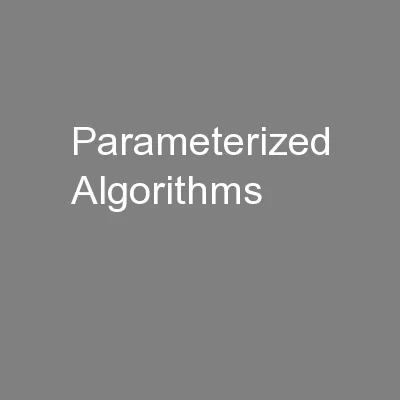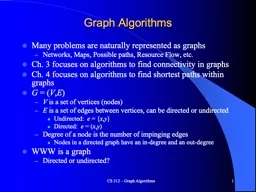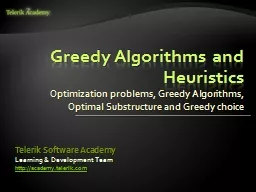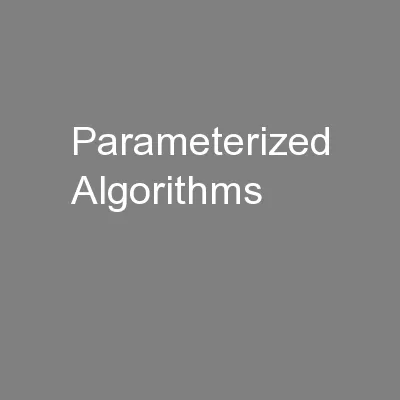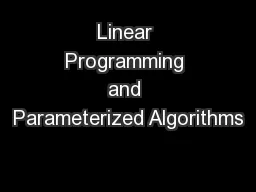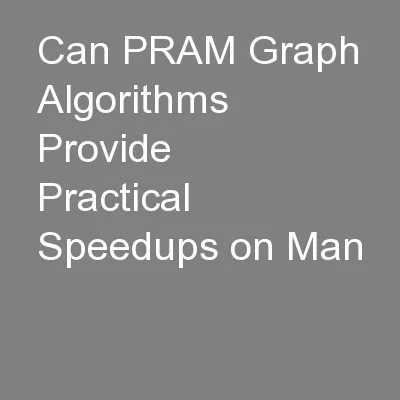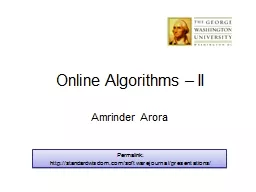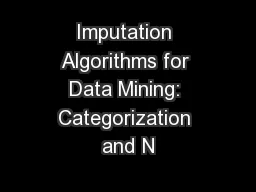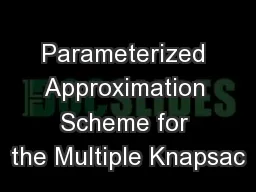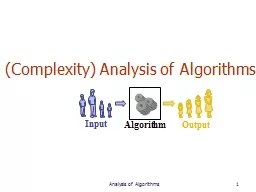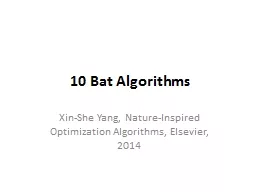PPT-Parameterized Algorithms
Author : danika-pritchard | Published Date : 2016-06-18
Advanced Kernelization Techniques Bart M P Jansen Insert Academic unit on every page 1 Go to the menu Insert 2 Choose Date and time 3 Write the name of your
Presentation Embed Code
Download Presentation
Download Presentation The PPT/PDF document "Parameterized Algorithms" is the property of its rightful owner. Permission is granted to download and print the materials on this website for personal, non-commercial use only, and to display it on your personal computer provided you do not modify the materials and that you retain all copyright notices contained in the materials. By downloading content from our website, you accept the terms of this agreement.
Parameterized Algorithms: Transcript
Download Rules Of Document
"Parameterized Algorithms"The content belongs to its owner. You may download and print it for personal use, without modification, and keep all copyright notices. By downloading, you agree to these terms.
Related Documents

